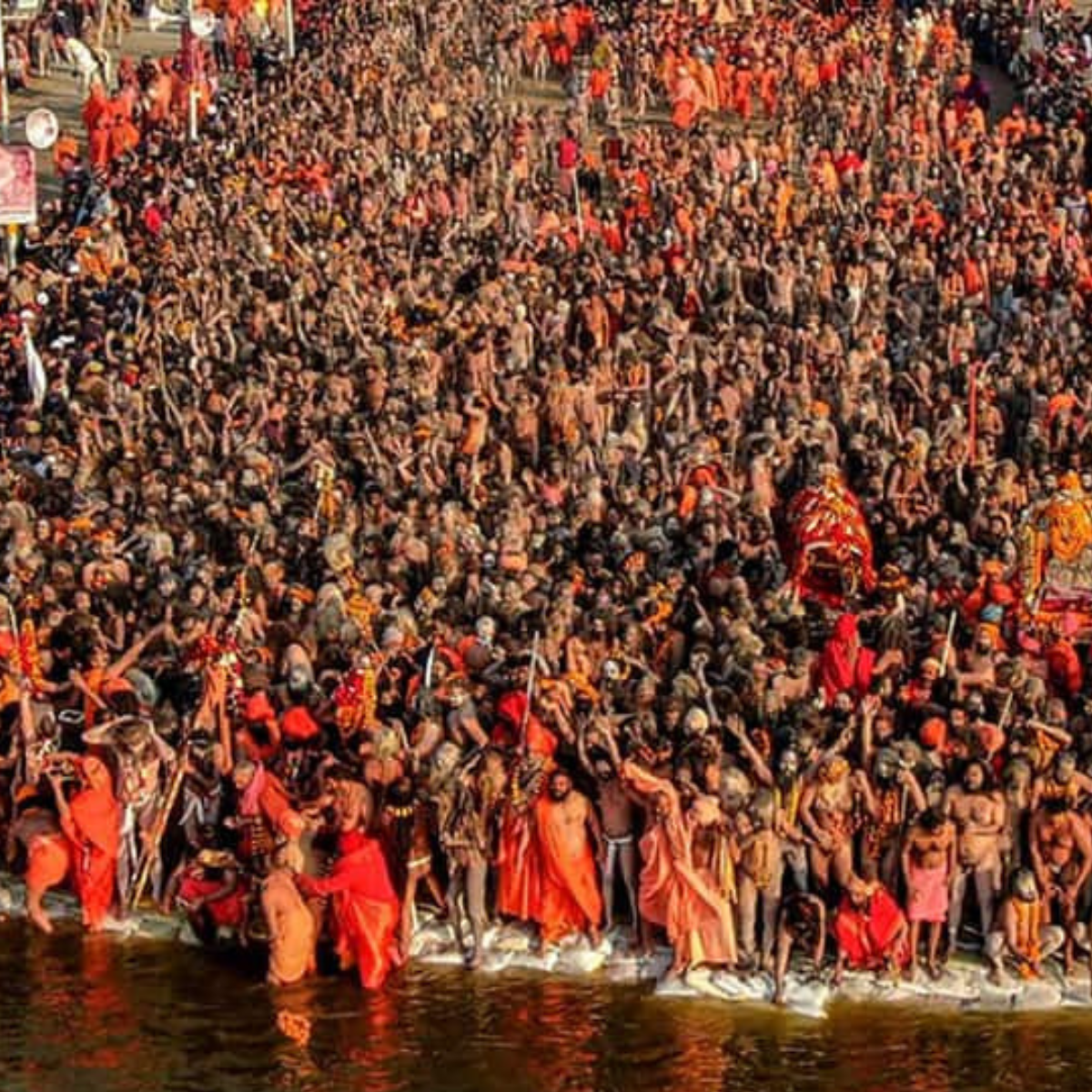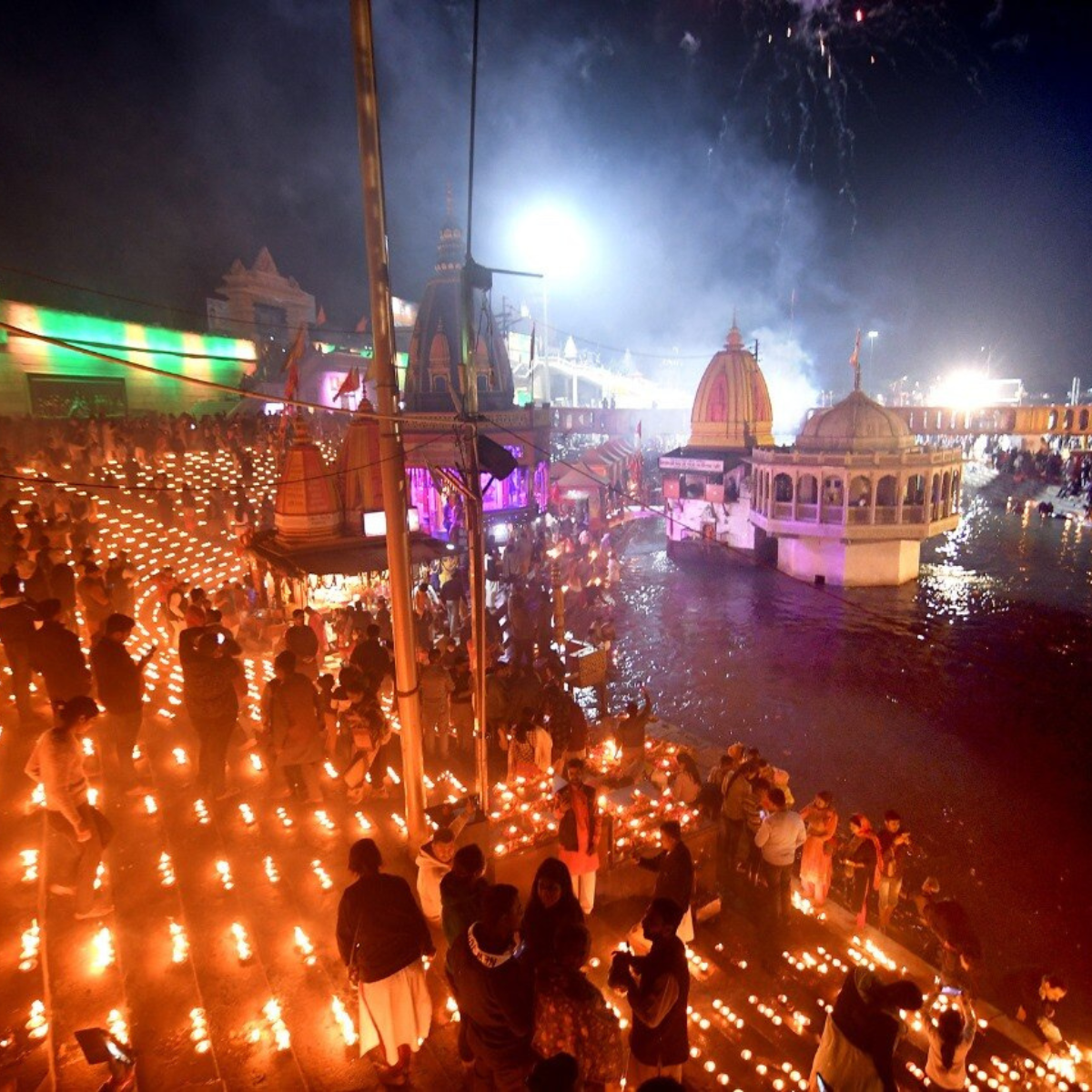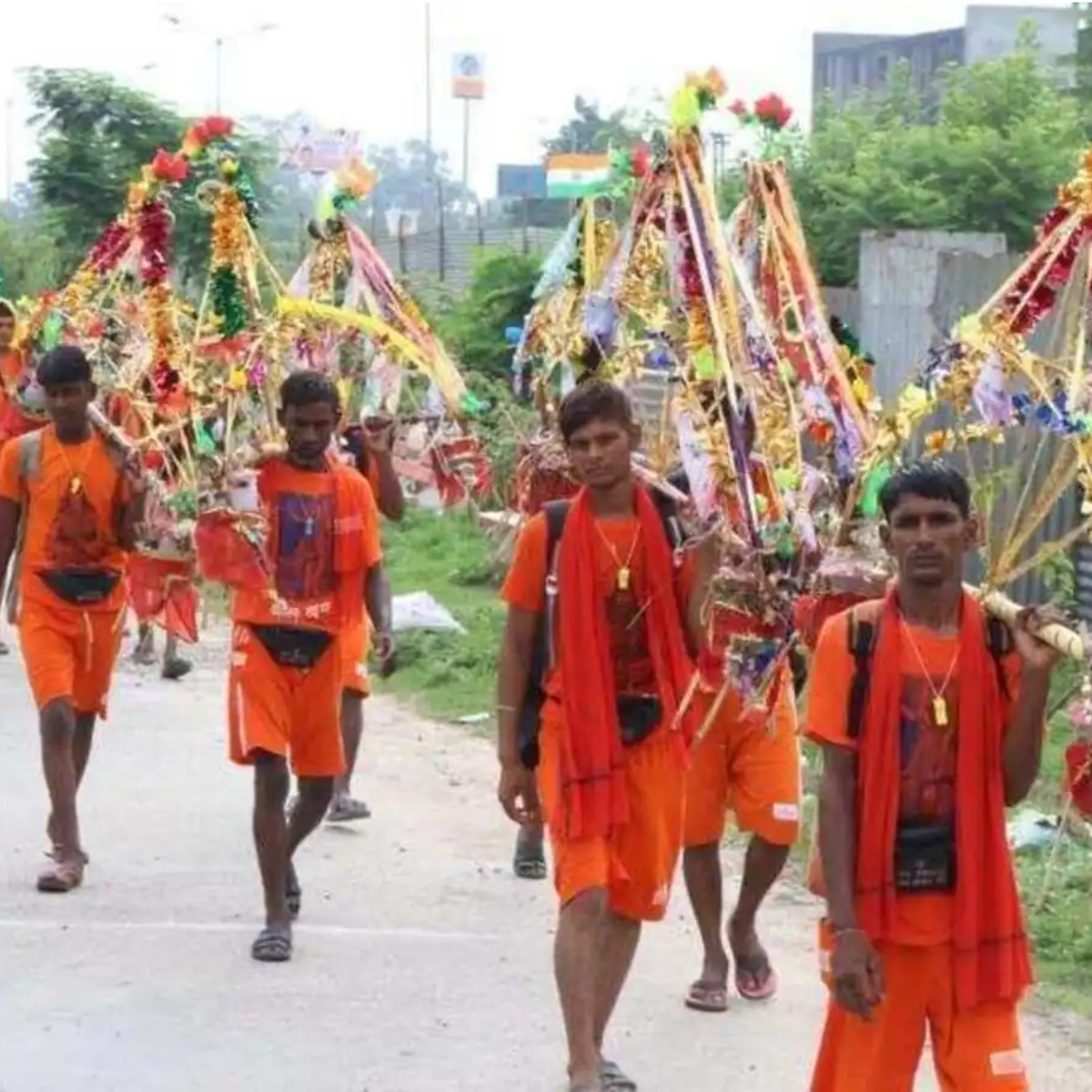Haridwar Festivals
Experience the Vibrant Spirit of Fairs & Festivals in Haridwar
- The Kumbh Mela in Haridwar has witnessed staggering numbers of visitors, reaching as high as 70 million people.
- The district administration also orchestrated the ‘Haridwar Mahotsava,’ a vibrant cultural festival of Haridwar spanning three to four days along the banks of the River Ganga, along with the ‘Ayurveda Mahotsava.’
- The Khari Holi Festival spans a duration of two months and is celebrated across the Kumaon region.
Festivals In Haridwar
Haridwar Festivals Delights: A Journey Through its Fairs, Festivals, and Mahotsavs
Haridwar is home to numerous religious festivals annually, including the revered Kavad Mela, Somvati Amavasya Mela, Ganga Dashara, and Gughal Mela, attracting a staggering participation of around 2-2.5 million devotees.
Festivals of Haridwar
Haridwar, one of India’s seven sacred cities, rests in Uttarakhand, marking the initial meeting point of the sacred Ganges River with the Indo-Gangetic plains. Every year, millions of devotees flock to this renowned Hindu pilgrimage site to immerse themselves in the purifying waters of the Ganges. The city is adorned with temples, ashrams, and winding lanes, offering a spiritual haven for seekers. Legend has it that a dip in the revered Har Ki Pauri absolves one of all sins. The captivating Ganga Aarti, conducted nightly at the Har ki Pauri Ghat, stands as the highlight of Haridwar, drawing thousands of worshippers who gather to offer prayers and release lit diyas onto the flowing waters of the Ganges.
This city, nestled in the state of Uttarakhand along the sacred river Ganga, attracts travelers primarily for its religious fairs and festivals of Haridwar. Here, amidst the serene surroundings, people of all ages and walks of life, including sages, pundits, and children, come to partake in the ritualistic bathing in the holy waters of the Ganges. The residents of Haridwar, deeply devout, actively engage in various religious gatherings and festivals throughout the year. Renowned as one of India’s most revered Hindu pilgrimage sites, Haridwar holds significant importance as the gateway to Kedarnath and one of the revered Dhams in the auspicious Char Dham Yatra, Badrinath. Pilgrims and tourists flock to this city year-round, drawn by its spiritual aura. From the grandeur of the Kumbh Mela to the solemnity of the Kanwar Mela and the fervor of the Ganga Dussehra, Haridwar stands as the vibrant “Door to the Land of God,” hosting a multitude of important celebrations.
Most Famous Festivals to Celebrate in Haridwar
Haridwar hosts numerous fairs throughout the year, including Somwati Amavasya, Kartik Poornima, Shravan Poornima, Ganga Dussehra, and other significant dates in the Hindu calendar. The Kanwad Mela during Shravana attracts a large number of devotees who come to collect holy water from the Ganges. The Kumbh Mela and Ardh Kumbh Mela occur every 12 and 6 years, respectively, drawing massive crowds. The district administration also organizes the ‘Haridwar Mahotsava’ and ‘Ayurveda Mahotsava,’ cultural and wellness festivals along the Ganges. Additionally, the annual ‘Urs’ at the Piran Kaliyar dargah welcomes people of all faiths to pray for their well-being.
Kumbh Mela
Haridwar becomes the epicenter of the Kumbh Mela, a colossal gathering attracting nearly 70 million pilgrims. Kumbh Mela is among the biggest festivals in Haridwar, Uttarakhand which celebrated once after 12 years. This sacred event, steeped in Hindu mythology and spirituality, draws visitors from across India and around the world. The precise scheduling according to the Hindu calendar adds an aura of mystery to the Kumbh Mela. The event transforms the riverbanks into a bustling tent city, where pilgrims of all backgrounds, from humble sadhus to wealthy traders, coexist in harmony, transcending societal divisions of class, religion, and economic status. This popular festival of Haridwar spans three months and occurs once every four years, alternating between Allahabad, Haridwar, Ujjain, and Nasik. Therefore, it only takes place once every twelve years in any given location.
Ardh Kumbh Mela
The Ardh Kumbh Mela in Haridwar occurs every six years, alternating with the full Kumbh Mela. Devotees from around the globe gather to worship their deities, seeking spiritual purification and blessings on this haridwar festival. A highlight of the festival is the ritualistic bath in the Ganges, where thousands cleanse themselves of sins. The event typically begins in March or April and offers a sacred destination for spiritual fulfillment. Visitors have a unique chance to immerse themselves in a spiritual whirlwind and experience the energy of sacred sites.
Kanwar Mela / Kavad Yatra
The Kanwar Mela / Kavad Yatra, starting in July, is dedicated to lord Shiva and it is one of the most important annual festivals in Haridwar. Kavad yatra is among the popular festivals of Haridwar that draws devotees from across India seeking divine blessings. Among the largest Hindu celebrations, the festivities in Haridwar culminate with a grand fire ritual honoring the Ganges. Originating at Gomukh near Nanda Devi in the Himalayas, where the Ganges begins, pilgrims carry vials of its water as tokens of their piety. The pilgrimage covers about 405 kilometers, attracting millions annually to Haridwar.
Kartik Purnima
In November, this festival of Haridwar is entirely dedicated to Lord Vishnu and celebrated after 15 days after Diwali on the full moon night in Kartik month. In Haridwar, thousands of lamps floating on the Ganges mesmerize observers as night falls. Bathing in the Ganges during this period is considered highly auspicious.
Ganga Dussehra
Ganga Dussehra is among the famous festivals of Haridwar. Ganga Dussehra in Uttarakhand is a ten-day celebration honoring the sacred river Ganges, held in May and June. Legend has it that the goddess Ganges descended to earth during this time. Devotees gather along the Ganges, conducting rituals and sacrifices to praise its divine waters, believed to bestow good health and spiritual prosperity. Highlights include the mesmerizing Ganga Aarti in Haridwar, where devotees purify their souls with holy dips and contemplation by the riverside. In the evening, earthen lamps are floated on the river as devotional songs fill the air.
Somwati Amavasya
Somvati Amavasya is a significant festival celebrated in Haridwar, occurring when Monday coincides with the first day of the lunar month, which happens multiple times a year. Devotees believe that taking a holy bath in the Ganges River on this day brings peace to their ancestors’ souls, relieving worries and aiding in personal growth and success. Married women observe fasting on this day to ensure their husbands’ long-term welfare, with the belief that it is as beneficial as making a thousand cow donations. Additionally, customs include worshiping the Peepal Tree and offering rituals to the Tulsi Tree.
Fair, Festivals, & Mahotsav of Haridwar

Kumbh Mela

Dev Diwali

Kanwar Mela
List Of The Most Popular Festivals Of Haridwar
Gateway of Gods is renowned for its temples and spiritual aura, reveres its rich cultural heritage through vibrant festivals. Throughout the year, the city embraces numerous celebrations, each a testament to its cultural splendor, adorned with lights, flames, flowers, and profound devotion. Apart from above mentioned festivals of Haridwar, there are many other festivals to celebrate in Haridwar. Here are some must-see Haridwar festivals celebrations amidst the many that grace Haridwar’s sacred grounds.
Most Famous Festivals to Celebrate in Haridwar
| Month | Occasion | Approx. no. of Tourists |
|---|---|---|
| January | Makar Sakranti | 2 to 2.5 lacs |
| Feb-March | Maha Shivratri | 2 lacs |
| March-April | RamNavmi | 3 to 4 lacs |
| April | Baisakhi | 8 to 10 lacs |
| May | Buddha Poornima | 3 lacs |
| May | Ganga Saptami | 2 lacs |
| June | Ganga Dussehra | 8 to 10 lacs |
| July-August | Kanwar Mela | 25 to 30 lacs |
| July | Somwati Amavasya | 20 to 25 lacs |
| August | Janmashtmi | 1 lac |
| October | Durga Puja | 3 lacs |
| November | Kartik Poornima | 7 to 8 lacs |
| Every Month | Ekadashis | 2 lacs |
| Poornimas | 2 lacs | |
| Amavasyas | 2 lacs | |
| Whenever occurs | Surya Grahans | 4 to 5 lacs |
| Chandra Grahans | 4 lacs |
Experiencing Haridwar Festivals
Festivals of Haridwar offer a glimpse into the rich tapestry of India’s cultural and spiritual heritage. From ancient rituals passed down through generations to modern celebrations infused with fervor and joy, each festival is a testament to the city’s vibrant soul. Whether you seek spiritual enlightenment or simply wish to immerse yourself in the beauty of tradition, festivals of haridwar promise an unforgettable journey of discovery and devotion.
